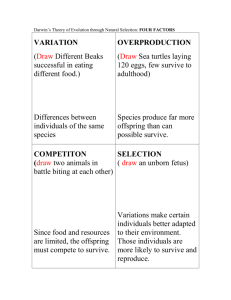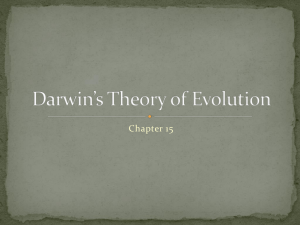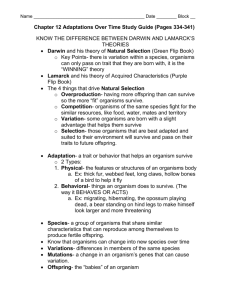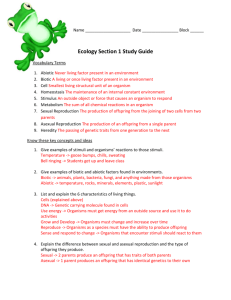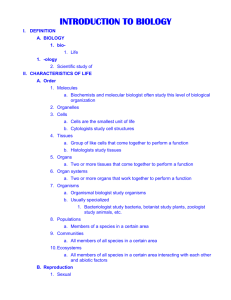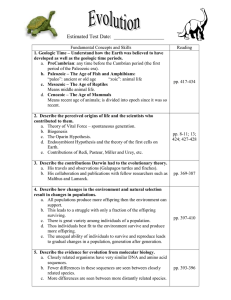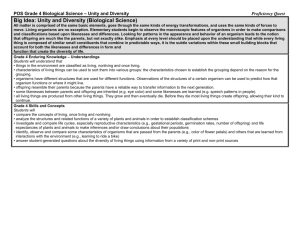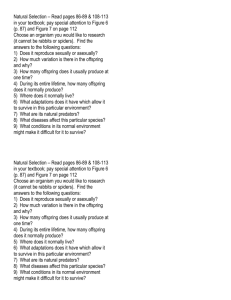Vocabulary Definitions - Liberty Union High School District
advertisement
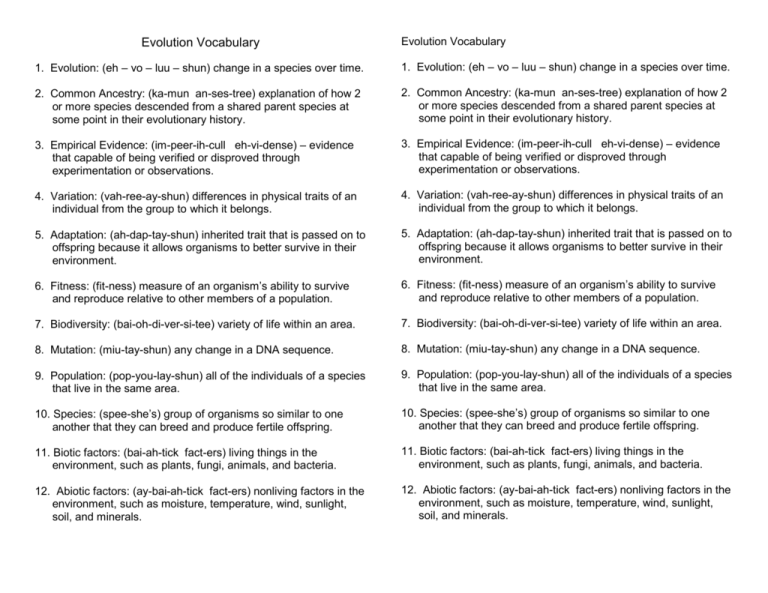
Evolution Vocabulary Evolution Vocabulary 1. Evolution: (eh – vo – luu – shun) change in a species over time. 1. Evolution: (eh – vo – luu – shun) change in a species over time. 2. Common Ancestry: (ka-mun an-ses-tree) explanation of how 2 or more species descended from a shared parent species at some point in their evolutionary history. 2. Common Ancestry: (ka-mun an-ses-tree) explanation of how 2 or more species descended from a shared parent species at some point in their evolutionary history. 3. Empirical Evidence: (im-peer-ih-cull eh-vi-dense) – evidence that capable of being verified or disproved through experimentation or observations. 3. Empirical Evidence: (im-peer-ih-cull eh-vi-dense) – evidence that capable of being verified or disproved through experimentation or observations. 4. Variation: (vah-ree-ay-shun) differences in physical traits of an individual from the group to which it belongs. 4. Variation: (vah-ree-ay-shun) differences in physical traits of an individual from the group to which it belongs. 5. Adaptation: (ah-dap-tay-shun) inherited trait that is passed on to offspring because it allows organisms to better survive in their environment. 5. Adaptation: (ah-dap-tay-shun) inherited trait that is passed on to offspring because it allows organisms to better survive in their environment. 6. Fitness: (fit-ness) measure of an organism’s ability to survive and reproduce relative to other members of a population. 6. Fitness: (fit-ness) measure of an organism’s ability to survive and reproduce relative to other members of a population. 7. Biodiversity: (bai-oh-di-ver-si-tee) variety of life within an area. 7. Biodiversity: (bai-oh-di-ver-si-tee) variety of life within an area. 8. Mutation: (miu-tay-shun) any change in a DNA sequence. 8. Mutation: (miu-tay-shun) any change in a DNA sequence. 9. Population: (pop-you-lay-shun) all of the individuals of a species that live in the same area. 9. Population: (pop-you-lay-shun) all of the individuals of a species that live in the same area. 10. Species: (spee-she’s) group of organisms so similar to one another that they can breed and produce fertile offspring. 10. Species: (spee-she’s) group of organisms so similar to one another that they can breed and produce fertile offspring. 11. Biotic factors: (bai-ah-tick fact-ers) living things in the environment, such as plants, fungi, animals, and bacteria. 11. Biotic factors: (bai-ah-tick fact-ers) living things in the environment, such as plants, fungi, animals, and bacteria. 12. Abiotic factors: (ay-bai-ah-tick fact-ers) nonliving factors in the environment, such as moisture, temperature, wind, sunlight, soil, and minerals. 12. Abiotic factors: (ay-bai-ah-tick fact-ers) nonliving factors in the environment, such as moisture, temperature, wind, sunlight, soil, and minerals.


